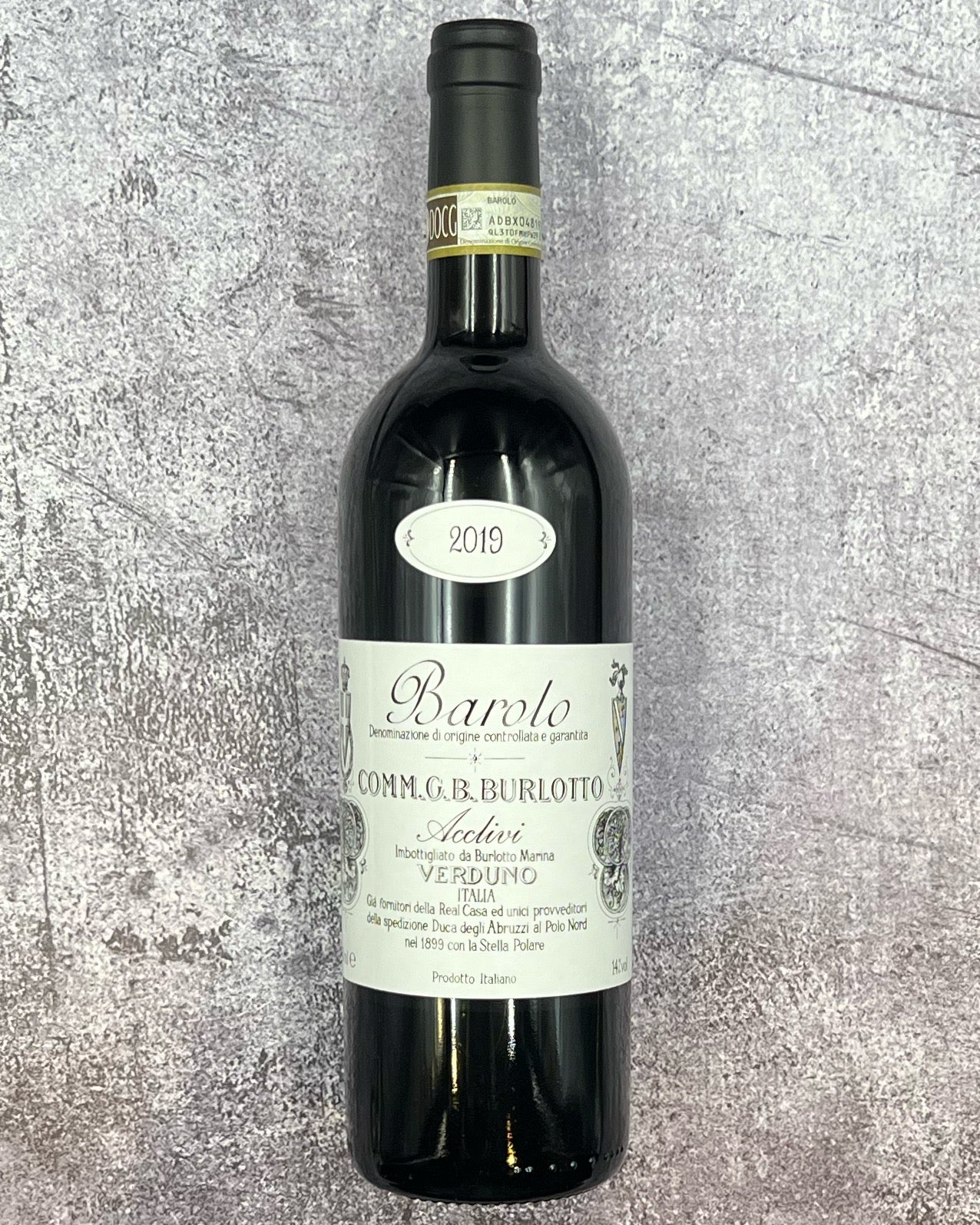Description
From: Piedmont, Italy
Varietal: Nebbiolo
Critical Acclaim:
Jeb Dunnuck: 99 Points
"The 2019 Barolo Acclivi is ripe with fresh raspberry, fresh sage, cinnamon, and wild roses. It takes on more depth and concentration and is long and elegant on the palate, with fine tannins and fresh notes of grenadine, dusty earth, and dried flowers. Long on the palate, cleansing and refined, with apricot and fresh citrus, this wine is drinking wonderfully at all its stages and is one of the more exceptional wines in the range for its balance. Drink 2025-2045."
Wine Advocate: 97 Points -
"The Comm. G.B. Burlotto 2019 Barolo Acclivi is a selection of fruit from old vines in the best positions in Verduno. Specifically, it is a blend of fruit from Monvigliero, Neirane and Rocche dell’Olmo. The bouquet opens to elegant floral intensity with wild rose, violet, orange peel and delicate berry. This wine feels very alive thanks to the lifted and delicate nature of its aromas. The finish is silky, with melting tannins and terrific length. Wines from Verduno tend to show a combination of floral intensity and spiciness, but this vintage of Acclivi is partial to the floral side of the equation."
Decanter: 94 points -
"A blend from three different MGAs (Monvigliero, Rocche Olmo, Nerirane) fermented and aged in big oak vessels, this interpretation exhibits aromas of violets, dried cherry and pot pourri, with some earthiness. The palate is tantalising and fresh, with firm and dusty, if not angular, tannins on the muscular finish. There is good length here. A wine to follow. Drinking window 2024-2045 (Jan 2023)."
Taste: On the nose, it captivates with ripe notes of fresh raspberry that meld seamlessly with aromatic whispers of fresh sage, cinnamon, and evocative wild roses. As it unfolds, the bouquet presents an elegant dance of floral intensity—wild rose and violet interlace with the zesty charm of orange peel, leading to the deeper layers of violets, dried cherry, and an alluring potpourri. An undercurrent of earthiness provides a grounding balance to these heady aromatics.
Upon the first sip, the palate reveals a surprising depth and concentration. It flows gracefully, marked by its long, elegant stretch, punctuated by fine tannins that are both invigorating and refined. Grenadine's freshness plays with the textured nuances of dusty earth and dried flowers, making each sip both tantalizing and introspective. There's an undeniable vitality to this wine. The finish is a blend of silky textures and melting tannins, culminating in a muscular yet refined finale. Those firm, dusty tannins, although bordering on angular, ensure a memorable finish, reminding the drinker of the wine's strength and grace.
About. In the heart of Piemonte, Italy, we find a treasure—Burlotto, the flagship producer from Barolo’s Verduno area. This property, founded in 1850 by the commendable Giovan Battista Burlotto, is a testament to historic importance, delicious wines, and exceptional value.
The Burlotto estate commemorates the royal house of Savoy’s appreciation for its wines through its labels, paying homage to the exclusive presence of Burlotto wines on Duke Luigi Amedeo's 1899 North Pole expedition. A testament to the wine's resilience and quality, Duke Amedeo wrote that “[t]he wine has been conserved in perfect condition,” despite his personal hardship of losing two fingers to frostbite. G.B. Burlotto was not just a winemaker but a pioneer, heralding the practice of selling wine in bottle and championing the now-rare, yet delicious grape, Pelaverga Piccolo.
Carrying on this rich legacy, G.B.’s great-great-nephew, Fabio Alessandria, continues to uphold the traditional winemaking practices of the estate, including fermenting the wine in upright wooden vats and using indigenous yeast. There's much to admire about these wines—their historical context, their pure fruit, delicate structure, and signature Verduno floral aromatics and spicy palate.
The Burlotto family's single-vineyard Barolos, especially the Monvigliero, have received wide acclaim and remain favorites among critics and collectors. Yet, their mastery doesn't stop with Nebbiolo; the estate also produces exceptional wines from Piedmont's more humble grapes, such as Dolcetto, Barbera, and of course, Pelaverga. These wines offer a glimpse into the unique charms of these grape varieties, offering terroir transparency and sheer drinkability that's surprisingly affordable for such top-rank wines.

